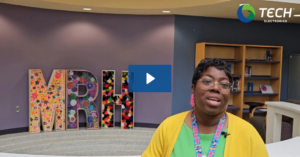By: Jeff Watson, Director of Tech Electronics of Indiana
As COVID-19 cases surge, numerous industries face increasing uncertainty heading into the fall, including higher education. Some schools remain cautiously optimistic about the prospect of reopening with in-person classes in the coming semester. On the other hand, an increasing number of universities are trending toward exclusively online offerings.
The digital transformation of the higher ed space began years ago, with varying degrees of adoption across colleges and universities. When COVID forced schools to pivot and finish the 2019-20 school year online, it was akin to hitting the fast-forward button on that transformation process.
Many institutions took advantage of discounts from video conferencing platforms like Zoom to hastily transition to a distance learning format, with instructors piecing together an adapted curriculum as they went. Their efforts were remarkable, and helped salvage a challenging semester for their students.
However, in the long run, students will need more. There is obviously no pre-established playbook in higher ed for dealing with a public health crisis of this size, but one thing is clear: trying to replicate a classroom in an online environment will likely always yield disappointing results.
Instead, instructors and administrators alike must think proactively about how to make the online environment work to their advantage, and to the benefit of their students. Investment in digital technology and distance learning infrastructure is not merely a stopgap measure. Instead, it could be a pathway to the future of higher education.
What does that future look like?
Let’s imagine the possibilities of a fully realized distance learning environment. Using modern AV over IP (AVoIP) lecture capture technology, the instructor produces a high-definition audio-visual presentation for students, synced with a slideshow and graphics. The lecture also features embedded quizzes which help ensure that students comprehend the material.Students watch the lecture individually in preparation for the class meeting. If they have questions or thoughts to share, they can contribute to a collaborative, annotated document that is stored in the class’s online hub.
Then, when the class meets over their conferencing platform of choice, the instructor can lead the session by addressing questions and comments from the class document. This naturally facilitates discussion, avoiding the stereotypical lecture interaction of an instructor “talking at” students, with no way of knowing whether or not they are engaged.
Students can tune into the lecture using any device compatible with the conferencing application. Bring Your Own Device (BYOD) functionality allows students to participate using whatever technology and environment enables them to succeed, whether that means a laptop at a desk, or a smartphone or tablet in their backyard.
If students have questions they would like addressed individually, they can discuss it with their instructor during virtual “office hours.”
Supposing this is a math class, our instructor could use screen sharing to walk a student through a demonstration of how to solve a difficult equation. Alternatively, the student could share their screen, allowing the instructor to observe their work and offer advice as they go.
Group projects can be a challenge when students are not able to meet in person, but developing collaborative skills is a crucial aspect of the higher ed experience. With collaboration platforms like Microsoft Teams, students can hold group meetings virtually, assign tasks with reminders, chat and share documents, all in one place.
This entire hypothetical may sound quite different from a traditional classroom, but again, in many ways, that is the point. In the current reality, being able to be unconventional and non-traditional is an instructor’s greatest asset.
How do we get there?
Navigating these challenges requires more than just plug-and-play solutions, but with the right technology partner, implementation can still be simple. At Tech, we have decades of experience working alongside higher education, as well as the forward-thinking mindset and technological aptitude to help guide institutions into the future, no matter what the future looks like. If you’re looking to empower your instructors both in and beyond the classroom, contact us today.



